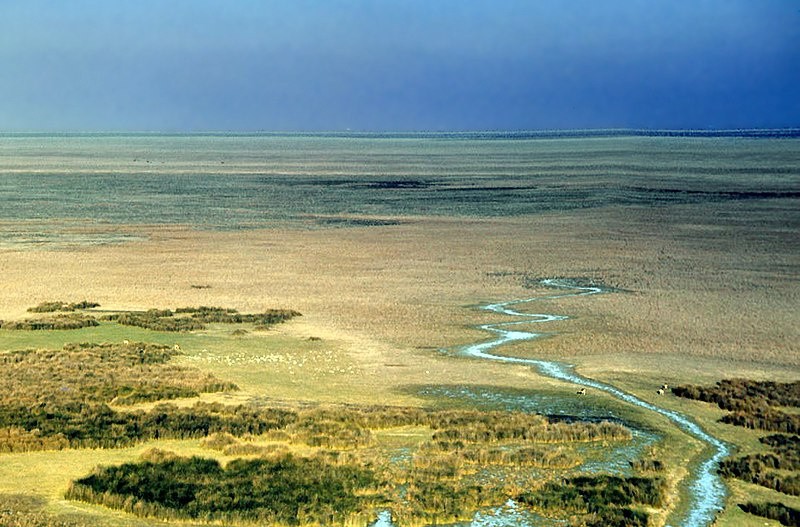A crucial Spanish wetland's lake is reduced to a puddle by overconsumption and dryness.
According to experts and environmentalists, the aquifer that supplies Doñana National Park, a Unesco World Heritage Site, has allegedly been overused for tourism and to irrigate fruit orchards.

Dried Up Lake
One of Europe's largest and most significant wetlands, Spain's Doñana National Park's largest permanent lake, has shrunk to a tiny puddle as years of drought and overuse have taken their toll on the aquifer that supplies the region and supports millions of migratory birds.
The Santa Olalla lake, located within a Unesco world heritage site, has dried up three times in the past 50 years, according to specialists from Spain's National Research Council (CSIC).
The largest permanent lake in Doñana and the last to still have water in August, the Santa Olalla lake, has dried up, according to a statement from the CSIC. It has recently been reduced to a little puddle in the middle, where there are no longer any waterbirds.
Environmentally Stressed Area

Doñana's water resources, which cover over 130,000 hectares (320,000 acres) of marshes, woodlands, and dunes in the Andalucian provinces of Huelva, Seville, and Cádiz, have significantly decreased over the past 30 years as a result of climate change, farming, mining pollution, and marsh drainage.
Environmental organizations have long advocated for protecting the territory, which is also home to a significant population of endangered Iberian lynxes, claiming that the aquifer is being stressed by illegal wells dug to supply the area's numerous soft fruit farms.
Right-wing regional parliament members disregarded their warnings, voting earlier this year to "regularize" 1,461 hectares of land close to the national park, granting farmers who had dug unauthorized wells and erected unauthorized plantations on the property legitimacy for their activities.
The CSIC stated that in addition to the Doñana's ephemeral lakes vanishing, its permanent lakes were also in danger due to the ongoing exploitation of the aquifer for intensive agriculture and human consumption.
The council claimed that while Doñana's lakes, marshes, and rice fields had historically been a haven for wildlife, the area had altered due to 10 years of below-average rainfall, forcing many birds to seek other habitats.
Eloy Revilla, the CSIC's Doñana, biological station manager, declared that "things have changed." The number of rice fields seeded this year is just a third of what it would ordinarily be due to the lack of water, and Doñana no longer has any permanent lakes.
Although the Santa Olalla lake dried up twice during a severe drought in 1983 and 1995, Revilla said that "the overexploitation of the Doñana aquifer is also to blame."
Chance of Being Replenished
According to the CSIC, water resources are severely strained by the big yearly migration of summer tourists to the adjacent tourist destination of Matalascañas.
The lake was "dry, parched and cracked; reduced to a little puddle of water and muck" on August 31, according to the council's camera. However, the greatest permanent lake in the Doñana may have been replenished the next day after many tourists had returned home.
In drought years like the current one, according to Revilla, limitations on water consumption in Matalascañas must be put in place.
Related Article : "The Lake is In Trouble" - Experts Worried as Utah's Great Salt Lake Hits Historic Low
For more climate and weather updates, don't forget to follow Nature World News!
© 2025 NatureWorldNews.com All rights reserved. Do not reproduce without permission.





